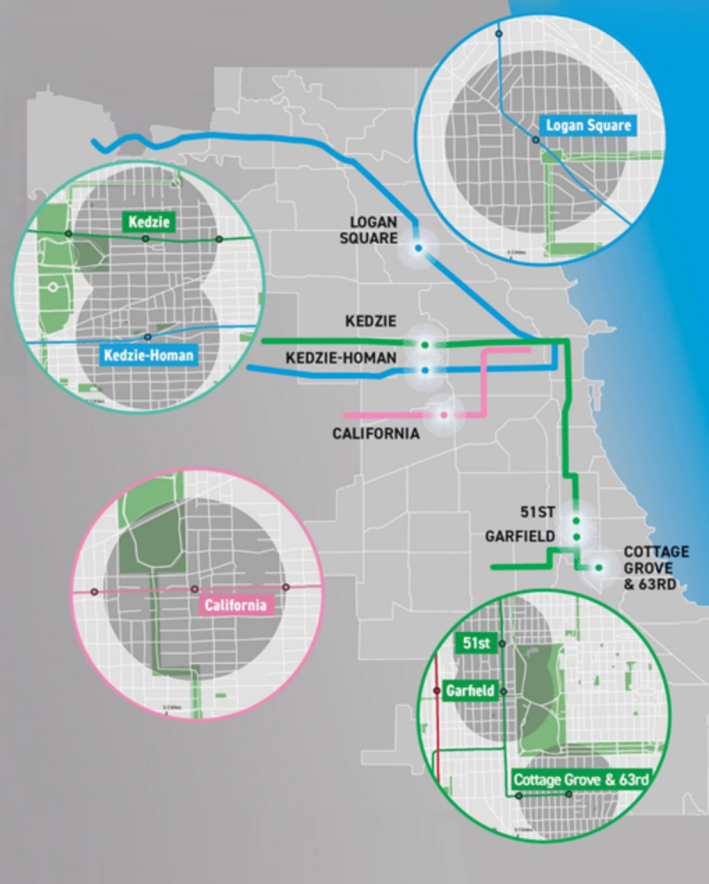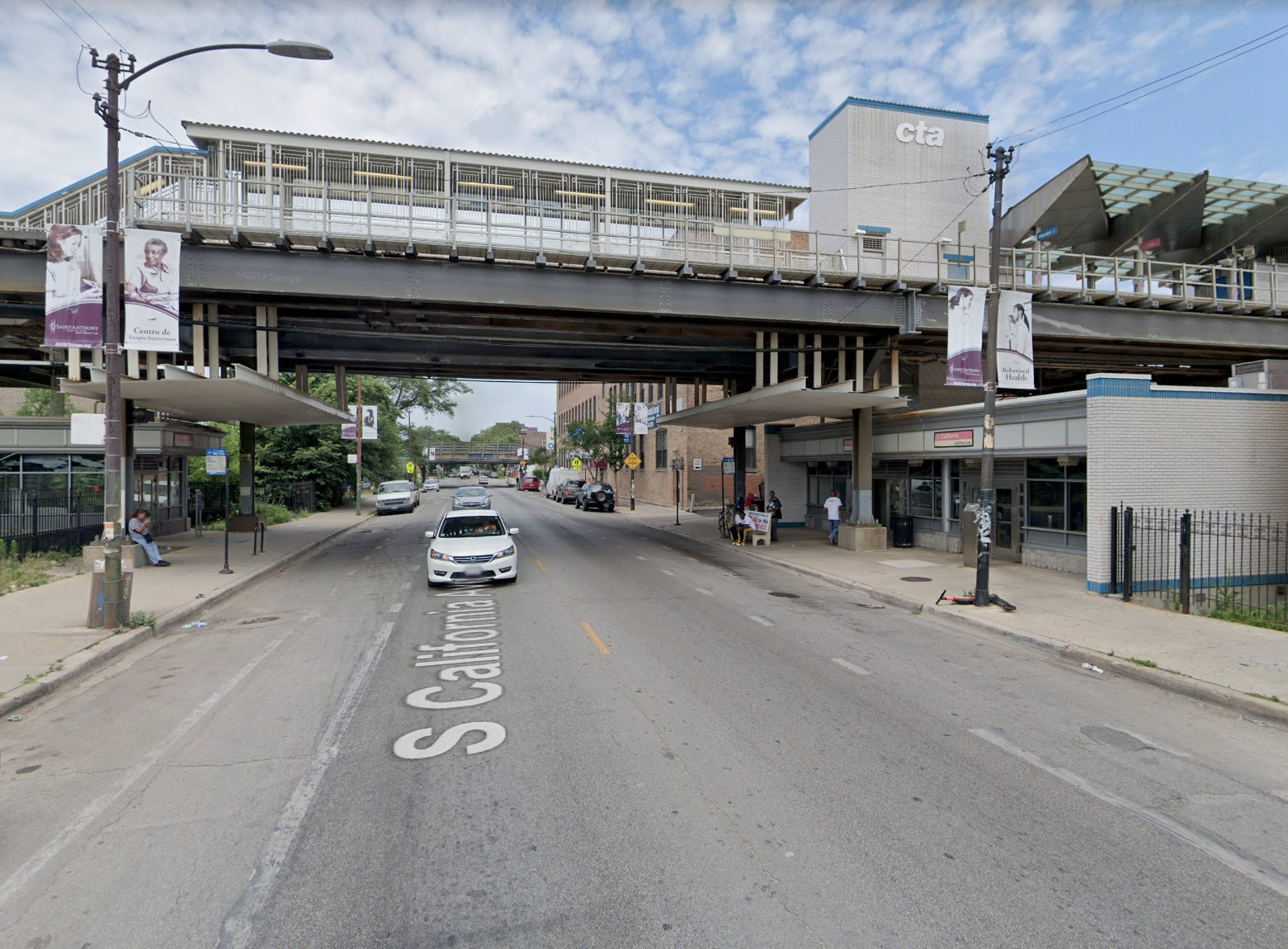A consultant by day, Richard Day (@richsday) serves on the board of Renaissance Social Services, an affordable housing provider in Chicago (the opinions expressed here are his own.) He lives in Logan Square and is on a mission to find the best hot dog in the city.
Since 2013, Chicago's transit-oriented development ordinance has been a key factor in neighborhood investment in Chicago. The ordinance makes it easier to build new housing near transit stations by allowing denser construction and essentially waiving costly off-street parking requirements. Ideally, this benefits everyone: Some studies have found that adding more market-rate housing helps reduce rent hikes, and residents living near train stations are more likely to use transit rather than drive.
But while our city's TOD ordinance has spurred more transit-friendly development in wealthy and gentrifying neighborhoods, it has done relatively little to encourage investment in parts of the city that need it the most. Between 2016 and 2019, 90 percent of transit-oriented development projects in the city occurred on the North Side, West Loop or Downtown. Few TOD projects happened on the West or South Sides.
Equitable Transit Oriented Development offers a way forward
Elevated Chicago hopes to address this gap. Since launching in 2017, the organization has worked to embed equity into conversations about transit-oriented development. This includes efforts to reduce displacement in rapidly gentrifying parts of the city, as well as bring needed investment to neighborhoods struggling with disinvestment and population loss. In neighborhoods on the South and West sides, Elevated is working to rebuild the interlocking public and private resources that support commercial activity and population density near transit stops. That includes efforts to support foot traffic and community needs with artwork and improved public space, as well as attract needed investment to boost population density and support business activity. The city launched its first Equitable Transit Oriented Development Policy Plan last year, and announced its first eTOD pilot program in June as part of a partnership with Elevated.
"Community Tables" are a key pillar of Elevated’s work. Located at key transit nodes, Community Tables serve as forums to highlight community needs and build consensus around the sorts of investments that can revitalize once-thriving economic corridors. In many cases, these hubs are built through existing community groups, such as the Logan Square Neighborhood Association and the Garfield Park Community Council. Elevated is also exploring community ownership models to address the risk of displacement if and when rents start to rise.

The group highlighted some exciting successes at its virtual eTOD Symposium, held on July 30. The event, which featured conversations with community leaders, transit advocates, and city officials including Mayor Lori Lightfoot, showcased the wide range of stakeholders Elevated has brought to the table. The symposium also featured some of the first major projects emerging from the eTOD effort. Isabel Cabrera of the Logan Square Neighborhood Association highlighted the Emmett Street development, a new 100-unit all-affordable project steps from the Logan Square Blue Line station that successfully overcame NIMBY objections over parking. Later in the program, famed Chicago architect Jeanne Gang previewed Assemble Chicago, a new carbon-neutral high-rise near the Harold Washington Library that will provide 207 units of affordable housing.

Although Elevated has made important progress, it remains an open question if the eTOD approach can effectively drive investment across the South and West sides. While a combination of tax credits and low-cost land sales can help support affordable housing in rapidly gentrifying neighborhoods, restoring investment in under-resourced neighborhoods can be more challenging. Segregation, asset-stripping, and disinvestment have left large wealth gaps between historically Black neighborhoods on the South and West sides and historically white neighborhoods on the North Side. Larger developers can often overlook neighborhoods they don’t have a history of investing in. Even when developers are focused on investing on the South and West sides, disparities in wealth and income can make it harder to secure financing and earn the returns necessary to support new investments. And the same red tape that raises costs and slows housing production in gentrifying neighborhoods can be fatal to projects in neighborhoods with lower expected rents.
But if eTOD efforts aren’t effective at attracting private investment, residents are left with empty promises and limited options. After Auburn Gresham residents shared their input on community needs as part of the city’s Invest South/West Initiative, they were disappointed to find that there was actually only one proposal to "choose" from—because only one developer had bid on the project.
To succeed, eTOD needs to add resources and remove red tape
Elevated program director Roberto Requejo is quick to point out that the eTOD process needs to start with communities, rather than spreadsheets. “We have tried technical fixes, and they haven’t worked. The history of Chicago is a history of planners and developers coming up with programs and initiatives that failed.” Elevated recognizes that reversing a history of exploitation will require an honest reckoning with the harm that’s been done. To succeed, the first priority needs to be ensuring that communities are made whole, rather than just investors.
That said, Elevated’s approach also shows real promise to catalyze structural change in the investment landscape. Turning transit stops into appealing destinations, with support ranging from better lighting and sidewalks to art and community space, can help create more appealing sites for commercial investment and small businesses. At the same time, Elevated’s focus on building off of existing community input has the potential to ensure development proposals are likely to succeed. Requejo noted that this can often accelerate development timelines, with benefits for communities and developers alike. “When we have gone to communities and talked to trusted community leaders, you don’t need to do a lot more engagement. They’ve been telling us for 20 years that they want a grocery store on this corner... So we don’t need to put together another set of meetings. We just need to provide them with capital and technical assistance.”
And while the group works to build consensus at the neighborhood level, Elevated is also pushing the city to be more flexible and supportive of eTOD investments. Part of this involves making city government more responsive and ensuring that city departments from Planning to Housing to Small Business are on the same page. Elevated also recognizes the importance of simplifying approvals for eTOD projects. It’s important to ensure that ambitious, community oriented eTOD projects don’t fall victim to costly and slow-moving approval processes. As Requejo put it, “How can we create the conditions and support so that eTOD developers encounter friendly zoning for their proposals? Why do they have to go through all these permits, requests for variances, and community meetings to build affordable housing next to a train station, while auto-oriented uses and luxury housing can be easily built by-right [without additional approvals]?”
Real progress, with a lot more to be done
Elevated’s work is ambitious and already starting to bear fruit. As the city gets ready to announce its first set of eTOD pilots, hopefully more successes are on the way. Over the long term, however, policymakers need to combine additional resources with a focused effort to cut through the paperwork and burdensome rules that can hinder investment in under-resourced neighborhoods. Developers and financial institutions need to be more willing to support projects in neighborhoods they have traditionally overlooked. To truly succeed, the eTOD pilots will need to be just the beginning of an ongoing stream of investment. Elevated has worked to listen to communities and amplify their needs. Let’s hope others are listening as well.





